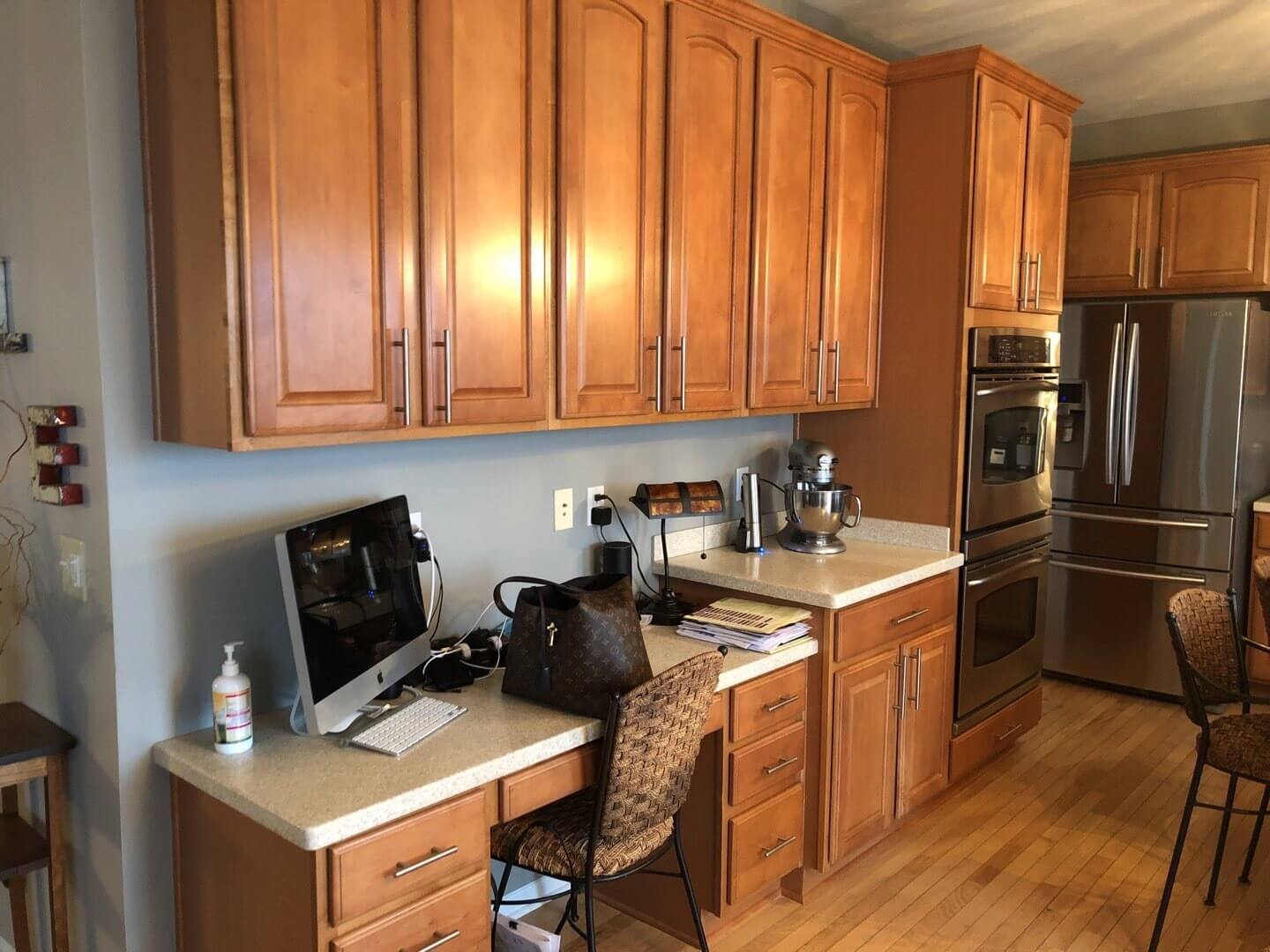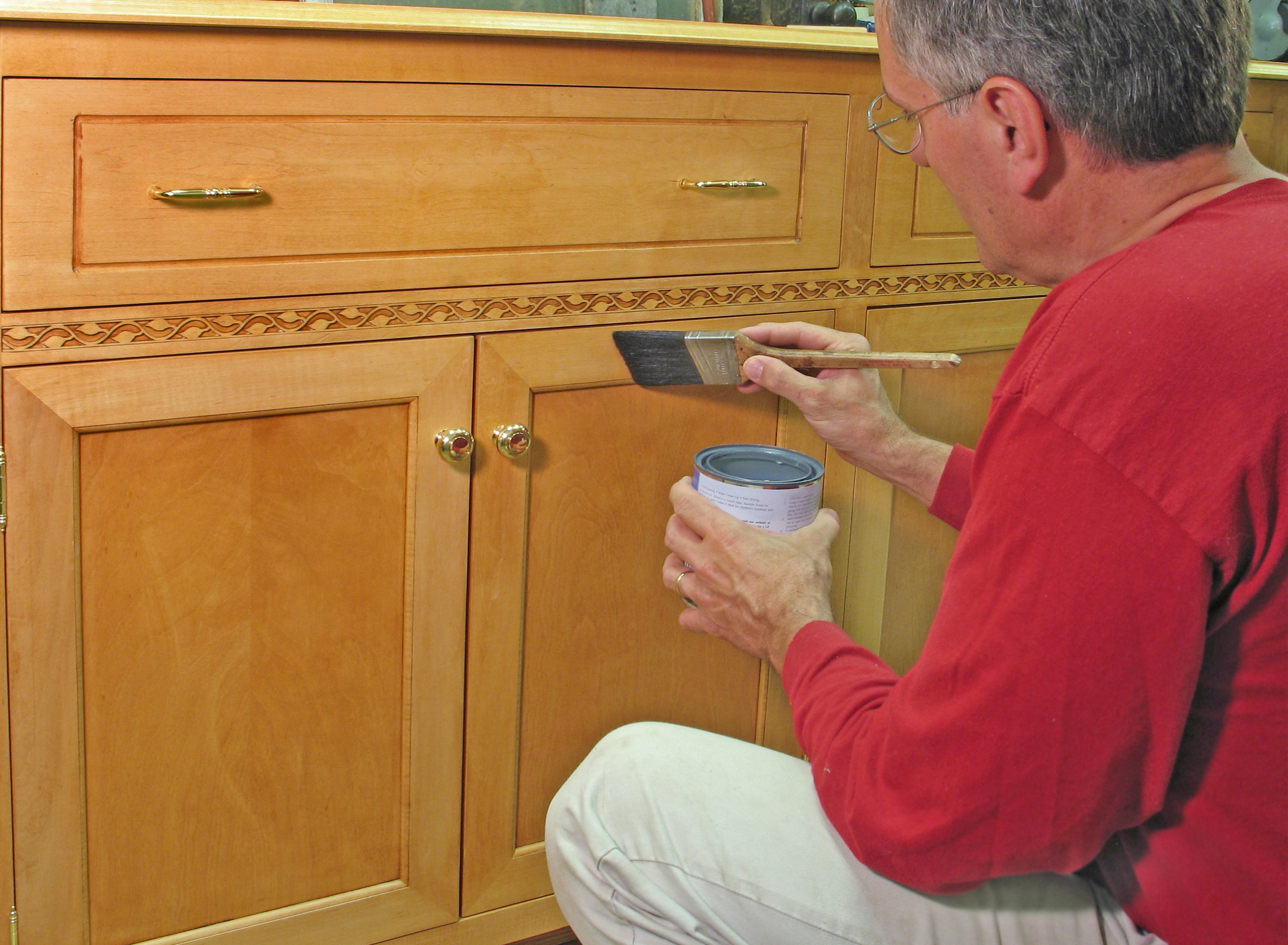Legalities and Landlord Considerations
Before embarking on your kitchen cabinet painting project, it’s crucial to understand the legal aspects and your responsibilities as a tenant. Ignoring these can lead to unforeseen conflicts and potential financial repercussions. This section clarifies the typical legal framework surrounding tenant alterations and provides a structured approach to navigating this process.
Lease Agreement Clauses Regarding Alterations
Most lease agreements contain clauses specifying permitted and prohibited alterations to the rental property. These clauses often prohibit significant structural changes or modifications that affect the property’s value or functionality. Common restrictions include alterations to plumbing, electrical systems, and major structural components. However, the specific language varies widely depending on the landlord and the jurisdiction. Carefully review your lease agreement to identify any restrictions on painting or other modifications. Look for clauses related to “alterations,” “repairs,” “improvements,” or “decorations.” Pay close attention to any definitions provided within the lease. Understanding these terms is paramount to avoiding future disputes.
Obtaining Permission from a Landlord to Paint Kitchen Cabinets
The process for obtaining permission typically involves submitting a formal written request to your landlord. This request should clearly Artikel your proposed project, including the type of paint, the colors you intend to use, and a proposed timeline for completion. Include assurances that you will restore the cabinets to their original condition upon vacating the premises. A detailed plan demonstrating your understanding of the process and minimizing potential disruption to the property is essential. Many landlords appreciate proactive communication and a well-defined plan. It shows respect for their property and minimizes potential concerns.
Examples of Communication Strategies for Requesting Permission
Effective communication is key to a successful outcome. Here are examples of email templates and a sample letter:
Email Template 1 (Formal):
Subject: Request for Permission – Painting Kitchen Cabinets at [Your Apartment Number]
Dear [Landlord’s Name],
This email is to formally request permission to paint the kitchen cabinets in my apartment, unit number [Your Apartment Number]. I propose using [Paint Brand] paint in the color [Color Name]. I have attached a detailed plan outlining the project timeline and cleanup procedures. I will ensure the cabinets are returned to their original condition upon vacating the premises. Please let me know if you require any further information.
Sincerely,
[Your Name]
[Your Contact Information]
Email Template 2 (Slightly Less Formal):
Subject: Painting Kitchen Cabinets – [Your Apartment Number]
Hi [Landlord’s Name],
I’d like to request permission to paint the kitchen cabinets in my apartment. I’m thinking of using a [Color Description] paint to brighten up the space. I’m happy to provide more details and a timeline if needed. Let me know what you think.
Thanks,
[Your Name]
Sample Letter Requesting Permission:
[Your Name]
[Your Address]
[Your Phone Number]
[Your Email Address]
[Date]
[Landlord’s Name]
[Landlord’s Address]
Dear [Landlord’s Name],
This letter formally requests permission to paint the kitchen cabinets in my apartment, located at [Your Apartment Address]. I plan to use [Paint Brand and Type] in the color [Color Name]. This project will be completed between [Start Date] and [End Date]. I will thoroughly clean the area after painting and will ensure the cabinets are returned to their original condition before moving out. I have attached a detailed plan outlining the project and my commitment to restoring the cabinets.
Thank you for your time and consideration.
Sincerely,
[Your Name]
Potential Consequences of Painting Cabinets Without Permission
Painting the cabinets without permission could result in several negative consequences. These can range from a written warning to eviction, depending on your lease agreement and your landlord’s policies. You might also be responsible for repainting the cabinets to their original color at your expense, or even for the cost of professional repairs if the paint job damages the cabinets. The potential financial penalties could significantly outweigh the cost of obtaining permission beforehand.
Sample Plan for Painting Kitchen Cabinets
A comprehensive plan demonstrates your responsibility and minimizes potential issues with the landlord. The plan should include: detailed steps, materials list, proposed timeline, and a cleanup plan. A well-structured plan will enhance your chances of obtaining approval. For instance, the plan might include steps such as: thorough cleaning of the cabinets, application of primer, painting with multiple coats, allowing adequate drying time between coats, and a final cleanup process. The timeline should realistically reflect the time needed for each step, considering drying times and potential delays. The cleanup plan should detail how you will dispose of paint cans and other materials responsibly, leaving the area clean and tidy.
Preparation and Painting Techniques

Transforming your apartment cabinets with a fresh coat of paint is a rewarding project, but proper preparation is key to achieving a professional-looking finish that lasts. This section details the crucial steps involved in preparing your cabinets and applying the paint effectively. Remember, thorough preparation minimizes future issues and maximizes the lifespan of your paint job.
Cabinet Cleaning
Thorough cleaning is the foundational step. Begin by removing all cabinet doors and hardware. Use a degreaser, like TSP (trisodium phosphate), following the manufacturer’s instructions, to remove grease and grime. This is particularly important in kitchens, where cabinets accumulate cooking oils and splatters. After degreasing, rinse thoroughly with clean water and allow the cabinets to dry completely. Any remaining residue will interfere with paint adhesion.
Cabinet Sanding
Sanding creates a smooth surface for optimal paint adhesion. Start with a coarser grit sandpaper (around 120-grit) to remove any imperfections, then gradually move to finer grits (180-grit, then 220-grit) for a smoother finish. Always sand in the direction of the wood grain to avoid scratches. Use a sanding block for even pressure and to prevent uneven sanding. After sanding, wipe down the cabinets with a tack cloth to remove dust particles. This prevents dust from mixing with the primer and paint, leading to a rough texture.
Priming the Cabinets, Can i paint my apartment cabinets
Priming is essential, especially on bare wood or previously painted surfaces. Primer seals the wood, prevents bleed-through (where the underlying color shows through the new paint), and provides a better surface for the topcoat. Use a high-quality primer specifically designed for cabinets. Apply the primer evenly using a brush, roller, or sprayer, ensuring complete coverage. Allow the primer to dry completely according to the manufacturer’s instructions before proceeding to the paint application.
Paint Types for Kitchen Cabinets
Choosing the right paint is crucial for durability and longevity. Two common types are latex and oil-based paints.
| Paint Type | Advantages | Disadvantages |
|---|---|---|
| Latex | Low odor, water-cleanable, dries quickly, durable | Can be less durable than oil-based in high-traffic areas |
| Oil-based | Very durable, smooth finish, resists scratches and stains | Strong odor, requires mineral spirits for cleanup, longer drying time |
For kitchen cabinets, a high-quality acrylic-alkyd enamel (a hybrid of latex and oil-based) is often preferred for its durability and relatively easy cleanup.
Applying Paint Evenly
Even paint application is crucial for a professional finish. Use smooth, consistent strokes, avoiding drips and runs. Apply thin, even coats, allowing each coat to dry completely before applying the next. For doors, use a combination of brushing and rolling for best results, starting with the edges and corners with a brush, then filling in with a roller. For frames, use a brush to reach detailed areas and corners. Multiple thin coats are better than one thick coat, which is more prone to drips and imperfections.
Painting Methods
Several methods exist for applying paint to cabinets.
| Method | Advantages | Disadvantages |
|---|---|---|
| Brushing | Precise control, good for detailed areas | Can be time-consuming, may leave brush strokes |
| Rolling | Fast coverage, smooth finish | Less control in detailed areas |
| Spraying | Fastest method, even finish | Requires specialized equipment, potential for overspray |
Handling Cabinet Hardware
Before painting, remove all cabinet hardware (knobs, pulls, hinges). This prevents paint from covering them and ensures a clean, professional look. Bag and label the hardware to keep track of where each piece belongs. After the paint is completely dry, reinstall the hardware. Consider using painter’s tape to mask off areas around hinges if you prefer not to remove them, but this method is more time-consuming and prone to paint bleeding under the tape.
Post-Painting Care and Maintenance: Can I Paint My Apartment Cabinets

Protecting your newly painted kitchen cabinets is crucial to ensuring their longevity and maintaining their beautiful finish. Proper care involves understanding how to clean them effectively and how to address minor damage. This section details the best practices for preserving your investment.
Protecting Painted Cabinets from Damage
Preventing damage is easier than repairing it. To minimize scratches and chips, avoid harsh impacts. Use soft cloths or microfiber pads for cleaning and handle items carefully near the cabinets. Consider using cabinet protectors, such as clear vinyl or felt pads, on the edges and corners, especially in high-traffic areas. Installing cabinet bumpers can also help prevent damage from doors slamming shut. These simple precautions can significantly extend the life of your paint job.
Cleaning Painted Cabinets
Regular cleaning is essential for maintaining the appearance of your painted cabinets. Avoid abrasive cleaners and scouring pads, which can scratch the surface. Use a soft, damp cloth with a mild dish soap solution. Rinse thoroughly with clean water and dry immediately with a soft cloth to prevent water spots. For stubborn stains, a mixture of baking soda and water can be gently applied, followed by thorough rinsing and drying. Always test any cleaning solution in an inconspicuous area first to ensure it doesn’t damage the paint.
Lifespan of Painted Cabinets with Proper Care
With diligent care, painted kitchen cabinets can last for many years. Regular cleaning, protection from impacts, and prompt repair of minor damage will significantly extend their lifespan. While the exact lifespan varies depending on the quality of paint and the level of care, well-maintained painted cabinets can easily last a decade or more, providing a beautiful and functional kitchen for years to come. For example, a friend of mine repainted her cabinets ten years ago using high-quality paint and careful application techniques; they still look fantastic today with minimal maintenance.
Repairing Minor Chips and Scratches
Minor chips and scratches can usually be repaired easily. For small chips, use a touch-up paint pen or brush in the same color as your cabinets. Apply a thin coat, allowing it to dry completely before applying another coat if necessary. For small scratches, gently rub a bit of toothpaste (non-gel) onto the scratch using a soft cloth, then wipe clean. For more significant damage, you may need to consult a professional painter for repair or refinishing. Remember, quick action on minor damage prevents it from becoming a larger problem.
